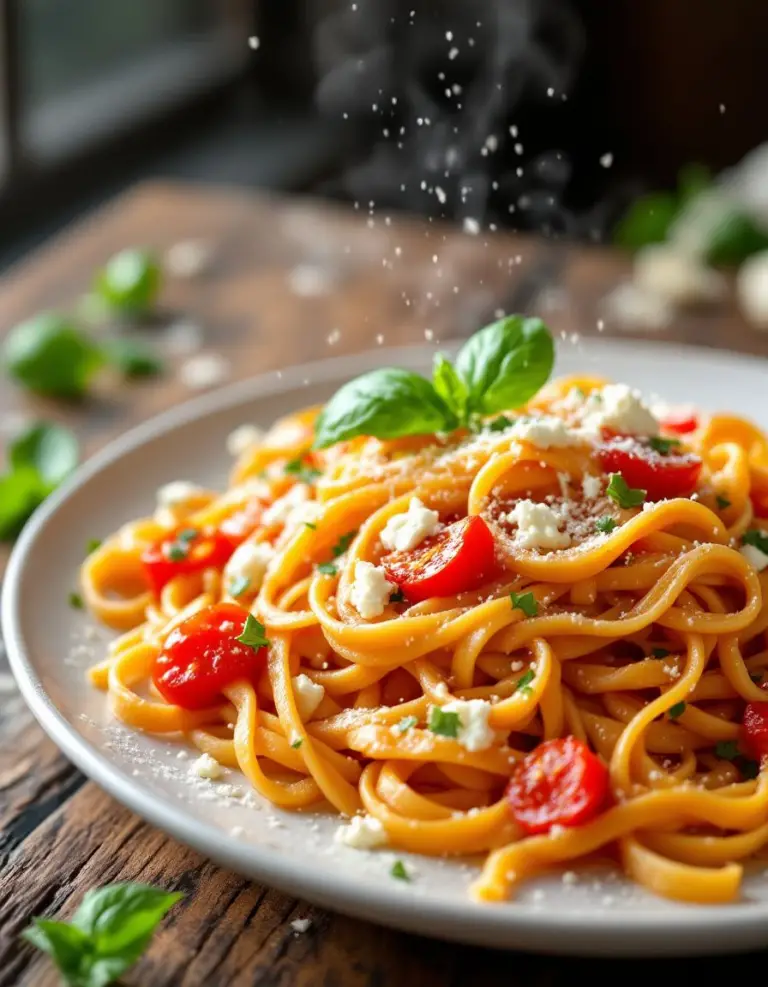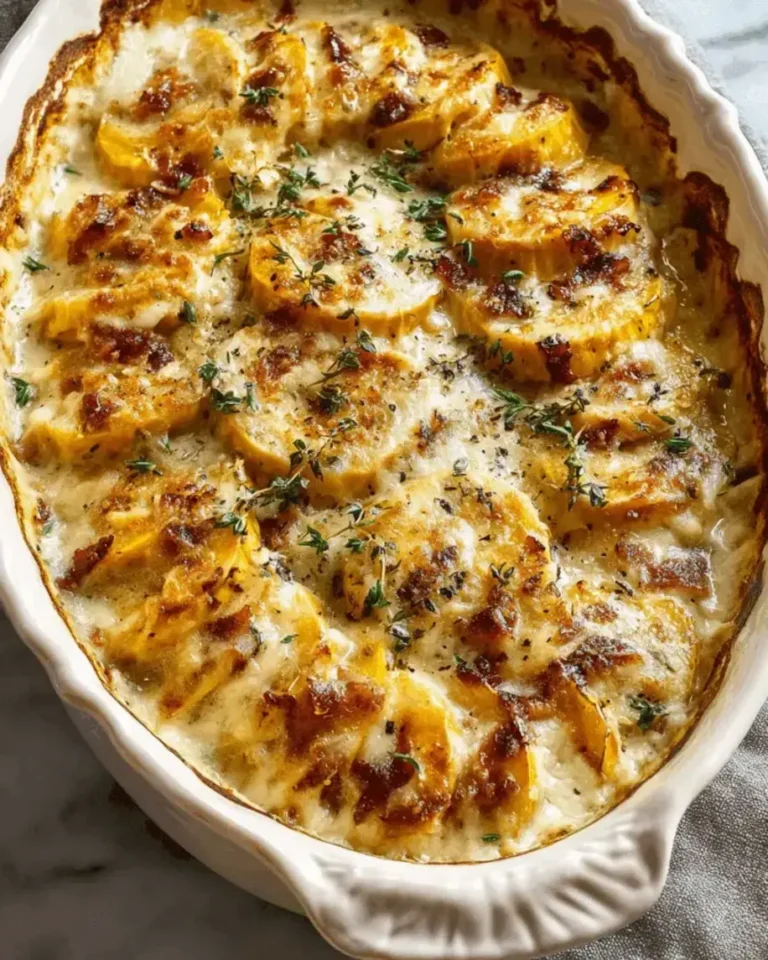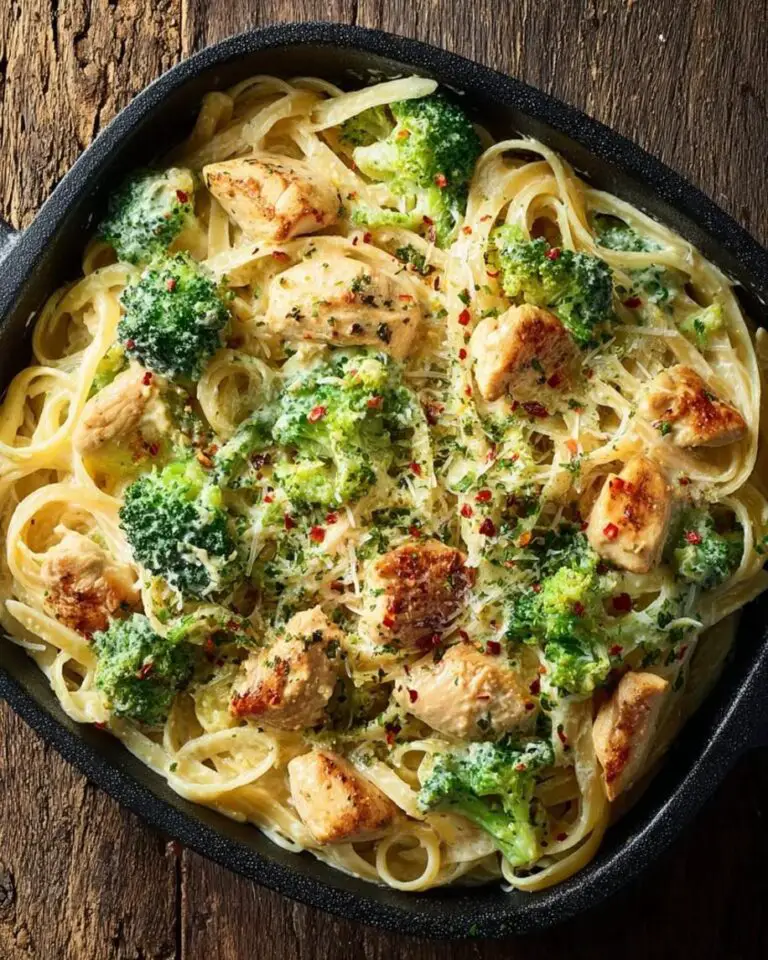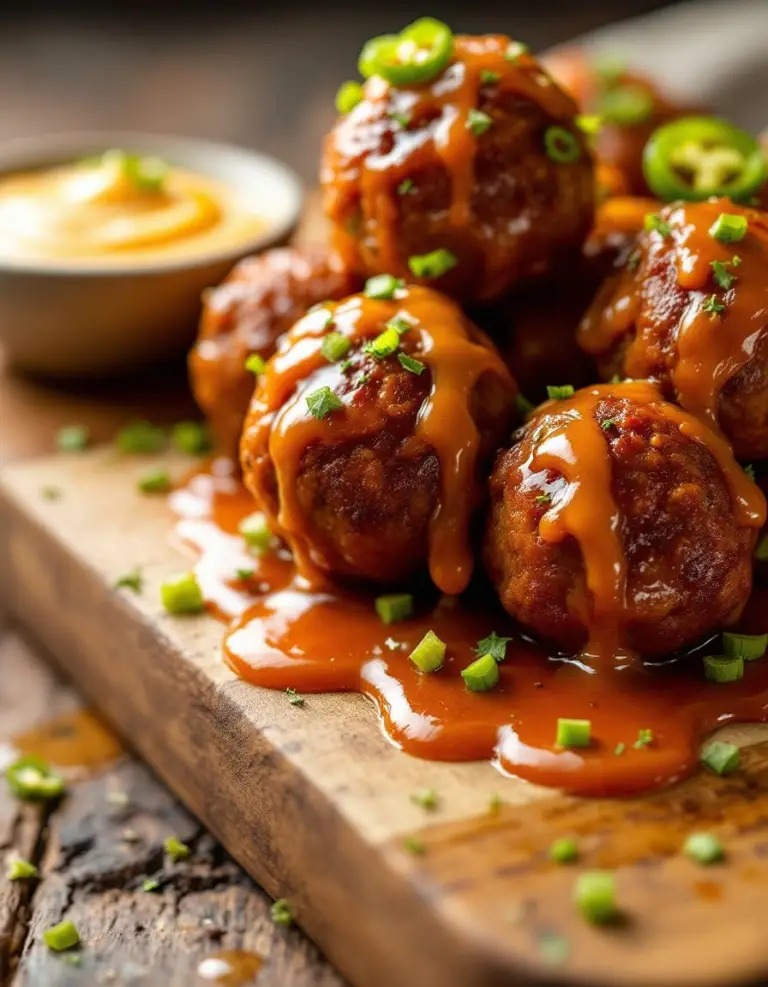Delicious Baked Chicken Ricotta Meatballs Recipe for Family Dinners
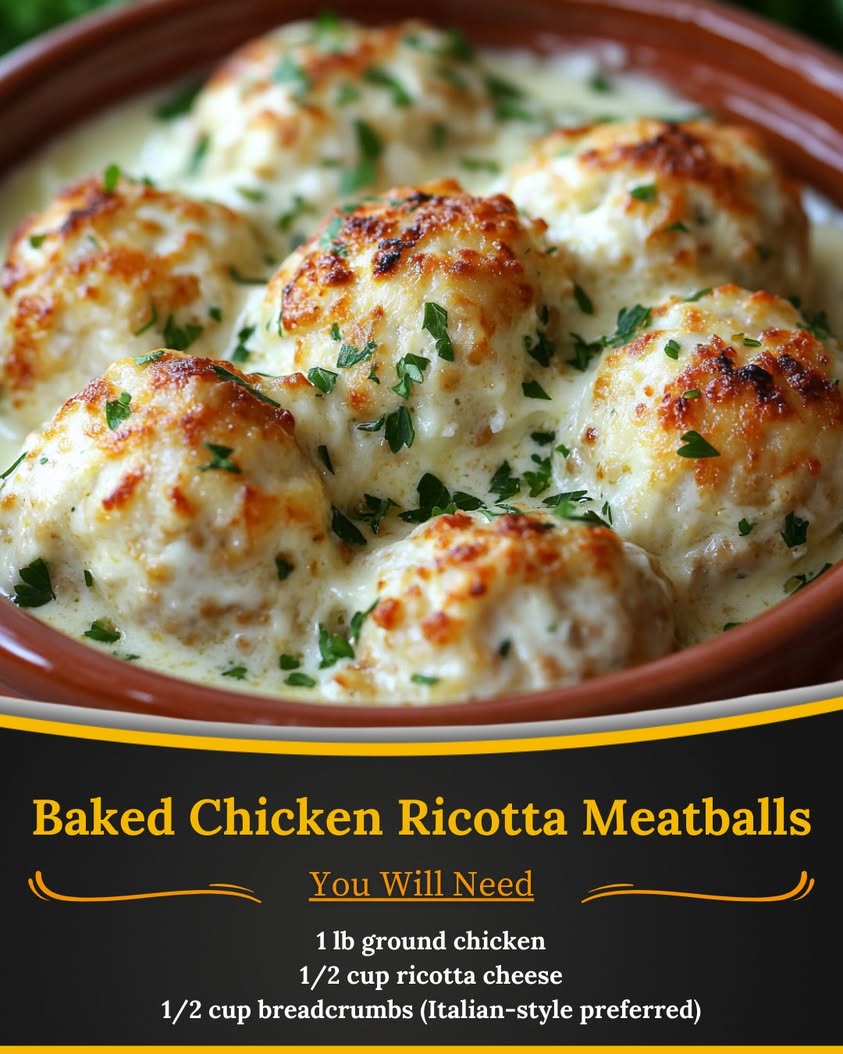
Baked Chicken Ricotta Meatballs: A Comforting Italian Delight
Baked Chicken Ricotta Meatballs offer a delightful combination of flavors that transport your taste buds straight to Italy. Juicy ground chicken is paired with creamy ricotta cheese, fragrant herbs, and a hint of garlic, creating a moist meatball that simply bursts with flavor in every bite. Baked to golden perfection, these meatballs are not only delicious but also a healthier alternative to their fried counterparts, making them an ideal comfort food.
The aroma of these meatballs baking in the oven fills your kitchen with warmth and comfort, evoking the feeling of a Sunday family dinner. The beautiful color contrast of the rich tomato sauce against the golden meatballs makes for an inviting presentation that is sure to please both family and guests alike. Whether served over pasta, in a sub, or on their own, these Baked Chicken Ricotta Meatballs are sure to become a favorite in your household.
Quick Recipe Highlights
- Flavor Profile: Savory chicken infused with ricotta, fresh herbs, and spices, complemented by rich tomato sauce.
- Texture: Soft and tender inside, with a slight crisp on the outside, delivering a satisfying mouthfeel.
- Aroma: An inviting blend of garlic, basil, and tomatoes wafts through the air as the meatballs cook.
- Visual Appeal: The golden-browned meatballs and vibrant red sauce present a tempting dish that’s hard to resist.
- Skill Level Needed: Requires basic cooking skills, making it accessible for home cooks of all levels.
- Special Equipment: A baking sheet and mixing bowl are essential for preparing and cooking these meatballs.
Recipe Overview
- Difficulty Level: The recipe is classified as medium, which means that while the process is straightforward, it does require attention to detail in forming the meatballs and ensuring even cooking.
- Category: These meatballs fit perfectly as an Italian main dish and are versatile enough for various meal occasions.
- Cuisine: Originating from Italian fare, this dish showcases the classic use of chicken and ricotta, elements cherished in Italian cuisine.
- Cost: This recipe is budget-friendly, with common ingredients easily found at any grocery store without breaking the bank.
- Season: Ideal for any season, these meatballs can be enjoyed during cozy winter nights or outside during summer barbecues with friends.
- Occasion: Perfect for family dinners, potlucks, or casual gatherings, these meatballs are sure to impress.
Why You’ll Love This Recipe
The flavor and texture of Baked Chicken Ricotta Meatballs are irresistible. Each bite offers a burst of savory goodness, with the ricotta creating a moist and tender meatball. Additionally, the meatballs absorb the rich flavors of the marinara sauce, enhancing the overall taste experience. This dish caters to both kids and adults, making it a family favorite for years to come.
The convenience of this recipe cannot be overstated. With a prep time of just 20 minutes and a cook time of 30 minutes, it’s a dish that fits well into a busy weeknight dinner schedule. You can easily prepare the meatballs in advance, as they freeze beautifully, allowing for quick meals in the future.
Nutritionally, this recipe provides a wholesome bunch of proteins from chicken and calcium from ricotta. Combined with the health benefits of the fresh herbs and the tomato sauce, this dish strikes a good balance between indulgence and nutrition, making it a great choice for health-conscious eaters.
Beyond mere sustenance, Baked Chicken Ricotta Meatballs are a showstopper for gatherings. They are perfect to serve as appetizers or main courses, creating an atmosphere of warmth and community around the dining table. The exquisite flavor profiles and beautiful presentation make them excellent for entertaining guests or celebrating special occasions.
Finally, the cost-effectiveness of this recipe is a huge bonus. Using simple, accessible ingredients, you can produce a gourmet-tasting meal without overspending. This means you can enjoy restaurant-quality flavors from the comfort of your home, making it an appealing choice for many.
Historical Background and Cultural Significance
The origins of meatballs date back to ancient times, with variations found in numerous cultures. However, the specific combination of chicken and ricotta is distinctly Italian. Historically, Italians have cherished using every part of the animal and making dishes that celebrate regional ingredients. Ricotta, made from whey, was often available in Italian households, making it a natural addition to meat preparations.
The cultural importance of meatballs in Italy cannot be understated. They are often associated with comfort food and family gatherings, representing the heart of Italian cooking – simple, hearty meals made with love. These meatballs, enriched with ricotta, symbolize the Italian culinary tradition of combining leftover ingredients to create satisfying meals.
Over the years, meatball recipes have evolved, incorporating different meats and cheeses as well as varying cooking methods—from frying to baking. The rise of health consciousness has brought a shift towards baked meatballs, like these, emphasizing lower fat content without sacrificing flavor.
Regional variations of meatballs are abundant throughout Italy, with each region adding its distinct twist. For example, the use of different cheeses or spices can vary from the north of Italy to the south, demonstrating the adaptability and beloved nature of this dish.
Ingredient Deep Dive
Chicken is the star ingredient in this recipe. It is light and versatile, often used in healthy cooking to provide protein-rich meals. Chicken’s cultural significance varies by region but is universally loved. For selection, choose fresh, organic chicken whenever possible for optimal flavor and texture. Store raw chicken in the refrigerator for no longer than 1-2 days to ensure freshness, or freeze it for longer storage. Substitutions can include ground turkey as a lean alternative.
Ricotta cheese enhances the meatballs’ creaminess. This cheese holds historical value in Italian cuisine, tracing back hundreds of years. It is made from leftover whey from the cheese-making process. Ricotta is high in calcium and protein, making it a nutritious choice. When choosing ricotta, look for brands that use whole milk for the best flavor. Store ricotta in the refrigerated section and consume it within a week after opening. If you’re looking for a substitution, cottage cheese can work in a pinch but may yield a different texture.
Parmesan cheese adds a flavorful depth to the meatballs. It has been a staple in Italian cooking for centuries, prized for its rich flavor. Parmesan contains protein and vitamins, enhancing the overall nutrition of the dish. When shopping, look for freshly grated Parmesan for maximum flavor. Store it in the refrigerator. As a substitute, Pecorino Romano can work but will impart a sharper taste.
Common Mistakes to Avoid
- Not using enough binding agents can lead to meatballs falling apart. Make sure to incorporate sufficient breadcrumbs and egg to hold them together.
- Overmixing the meat mixture can result in tough meatballs. Mix only until combined to maintain tenderness.
- Using too much cheese can cause the meatballs to become overly rich. Balance is key; stick to the recommended amount.
- Failing to preheat the oven properly leads to uneven cooking. A hot oven is essential for browning and achieving the right texture.
- Baking meatballs on a flat surface may prevent them from cooking evenly. Elevate them on a broiler pan or rack to encourage even heat circulation.
- Not seasoning adequately can make your meatballs bland. Taste the mixture before cooking, adding salt or seasoning as needed.
- Skipping the resting time can yield dry meatballs. Let them rest for a few minutes after baking to retain moisture.
- Using frozen chicken without proper thawing will alter the cooking time and texture. Always thaw chicken in the refrigerator before using.
- Not allowing the sauce to simmer can leave a raw flavor. Take time to let the marinara sauce develop its intimacy with the meatballs.
- Overcrowding the baking tray will steam the meatballs instead of roasting them, impacting the final texture. Space them evenly while baking.
Essential Techniques
Shaping meatballs is crucial for a successful dish. Ensure you use your hands to lightly roll the mixture into balls without compacting it too tightly. Visual cues for success include a smooth surface and uniform size, allowing for even cooking.
Baking meatballs instead of frying is a healthier option. For perfect baked meatballs, ensure the oven is adequately heated. Visual cues during cooking include golden-brown surfaces and an internal temperature of 165°F.
Creating a flavorful marinara sauce enhances the meatball experience. Sauté garlic and onions to deepen the flavor, then allow the sauce to simmer, thickening the blend. The aroma during this process signals a rich and savory sauce ready for serving.
Pro Tips for Perfect Baked Chicken Ricotta Meatballs
To ensure perfectly moist meatballs, let the mixture sit for about 10 minutes after mixing. This allows the breadcrumbs to absorb moisture.
Experiment with your favorite herbs for added flavor diversity. Fresh basil and parsley can dramatically elevate the taste profile of your meatballs.
Consider using a mix of ground chicken and pork for richer flavors. Mixing meats can offer a depth that enhances the final dish.
Make a double batch and freeze half for an easy weeknight dinner option. Meatballs freeze well and maintain their quality after thawing.
Use a scoop to portion meatballs for uniformity, ensuring even cooking throughout. This also makes it easier to manage the cooking process.
Experiment with different sauces; a spicy arrabbiata or creamy Alfredo can give a unique twist to your meatballs.
For added flavor, wrap each meatball in prosciutto before baking. This will create a crispy outer layer and enhance your flavor experience.
Variations and Adaptations
For a regional variation, try adding Italian sausage to the mixture for an added flavor punch. Combine equal parts chicken and sausage for a unique twist.
As seasons change, adapt your recipes by adding seasonal vegetables to the sauce, such as zucchini or bell peppers, to enhance both nutrition and flavor.
For dietary modifications, consider using ground turkey for a leaner option or make the meatballs gluten-free by using gluten-free breadcrumbs.
Flavor variations can be explored by incorporating sun-dried tomatoes, olives, or even feta cheese into the meatball mixture for Mediterranean flair.
If you prefer a different texture, try lightly frying the meatballs before transferring them to the oven. This provides a crispy outer layer while retaining the juicy interior.
Presentation alternatives include serving meatballs over a bed of sautéed spinach or zucchini noodles for lower-carb options, enhancing both aesthetics and healthiness.
Serving and Presentation Guide
For an impressive presentation, serve your meatballs over a swirl of marinara sauce on a large platter. This creates a visually stunning base that showcases each meatball’s color.
Garnish the dish with fresh herbs, like parsley or basil, to add a pop of color and freshness. A sprinkle of Parmesan on top also enhances the dish’s appeal.
Traditional accompaniments include crusty garlic bread or a fresh salad, adding a refreshing contrast while balancing the rich flavors of the meatballs.
For modern serving suggestions, consider meatball sliders on soft buns topped with mozzarella and fresh basil for a trendy appetizer or party snack.
Serve at varying temperatures; these meatballs are delicious hot out of the oven, but they also taste great at room temperature, making them versatile for gatherings.
Portion control can be managed by serving meatballs on smaller plates or in appetizer-sized portions to allow guests to sample multiple flavors without feeling overwhelmed.
Wine and Beverage Pairing
When it comes to wine pairings, a Chianti complements the flavors of the meatballs and sauce beautifully, enhancing the overall dining experience. The acidity of the wine cuts through the richness of the dish.
For those avoiding alcohol, consider serving sparkling water with a splash of lemon or herb-infused tea. These options can refresh the palate between bites.
If coffee or tea pairs apply to your meal setting, a mild roast coffee offers a great contrast to the rich flavors of the dish without overpowering it.
Temperature considerations are vital; serve red wine at room temperature while chilled beverages can provide a refreshing interplay with the warm meatballs.
For an elegant touch, consider serving desserts like Tiramisu to follow up the meal, balancing the afternoon or evening with complementary flavors.
Storage and Shelf Life
To store baked meatballs, allow them to cool completely and place them in an airtight container. They can be kept in the refrigerator for up to three days.
For longer storage, freeze cooked meatballs after cooling. They can last up to three months in the freezer while maintaining quality if stored correctly.
When reheating, ensure the meatballs reach an internal temperature of 165°F to ensure safety and preserve moisture.
Signs of spoilage include an off smell or unusual discoloration. If you notice any changes, it’s best to err on the side of caution and discard them.
Reheating meatballs in the oven or microwave can revive their texture and moisture. Avoid heating them on the stovetop, which may lead to drying out.
If you want to separate the cooking process, consider freezing the meatballs prior to baking, allowing for easy meal prep in the future.
Make Ahead Strategies
Preparing your meatball mixture a day in advance can enhance flavors and make your cooking process smoother. Store the mixture in the refrigerator until ready to use.
You can also bake the meatballs ahead of time. After cooling, refrigerate or freeze them with marinara sauce for a quick reheat meal option.
For best results, assemble the dish and freeze it uncooked. This allows for a fresh-baked option with minimal effort later on while preserving the meatball texture.
During the make-ahead process, prepare your sauce and refrigerate it separately. This keeps flavors vibrant and fresh when you’re ready to serve.
If you want to add fresh elements, consider preparing a quick salad or side dish the day of serving for a fresh crunch to complement the dish.
Lastly, have your garnishes ready in advance, so when it comes time to serve, you can easily elevate your presentation with minimal fuss.
Scaling Instructions
To halve the recipe, simply divide all ingredient amounts by two. This is ideal for smaller gatherings or when testing the recipe for the first time.
Doubling or tripling the recipe necessitates a recalibration of cooking times; larger batches may require slightly longer to cook evenly through.
Equipment adjustments might be needed. A larger baking sheet or multiple sheets will ensure even cooking when preparing larger batches of meatballs.
Timing modifications should also be considered. Larger quantities may take more time in the oven, so always check for doneness using a meat thermometer.
For storage considerations with scaled recipes, ensure you have ample container space for leftovers, especially if freezing large portions after cooking.
Lastly, keep flavor ratios consistent across larger batches to maintain the dish’s integrity, ensuring no ingredient overpowers the others.
Nutritional Deep Dive
A macro breakdown of these meatballs reveals a balanced mix of protein, fats, and carbohydrates, provided mainly from chicken, ricotta, and breadcrumbs.
Micronutritional analysis shows a rich supply of calcium from ricotta and iron from chicken, beneficial for bone health and energy production.
Health benefits of this recipe include high-quality protein sources from the chicken, essential for muscle growth and repair, and calcium for bone health from the cheese.
Dietary considerations for those monitoring their caloric intake or following specific diets such as high-protein, low-carb can be accommodated by adjusting ingredients as needed.
Portion analysis is important to understand caloric intake; serving size greatly affects nutritional content. Keep portion control in mind to enjoy without compromising health goals.
For weight management, pairing the meatballs with fresh vegetables or a side salad offers a fiber-rich way to stay full without excess calories.
Dietary Adaptations
Making this dish gluten-free is simple; just replace the breadcrumbs with gluten-free alternatives, ensuring everyone can enjoy them.
For a dairy-free option, consider using non-dairy cheese alternatives, along with omitting ricotta altogether to maintain the texture of the meatballs.
Vegan adaptations involve replacing the chicken with plant-based proteins such as lentils or beans, which are packed with protein and fiber, while substituting plant-based or nut-based cheeses.
Low-carb options can be achieved by replacing traditional breadcrumbs with almond flour or ground flaxseed, offering an alternative that still binds the ingredients well.
For a keto approach, utilize high-fat dairy options and reduce any carb-heavy ingredients, ensuring the dish remains compliant with dietary goals.
Paleo followers can enjoy without breadcrumbs, utilizing crushed nuts for texture while keeping in line with whole food principles.
Low-FODMAP adaptations typically involve avoiding high-FODMAP ingredients like onions and garlic; use garlic-infused oil instead for flavor without triggering sensitivities.
Troubleshooting Guide
If your meatballs are falling apart, consider adding more binding agents such as breadcrumbs or an egg to the mixture, which helps hold everything together.
Texture issues often arise from overworking the meat; keep mixing to a minimum when forming the meatballs for optimal tenderness.
Flavor balance can be corrected by adjusting seasoning; if too bland, add salt or herbs gradually until desired flavor is reached.
Temperature problems may occur due to uneven oven placement. Always use the center of the oven for even cooking and optimal browning.
Equipment challenges can arise if your baking sheet is overcrowded; spread meatballs out adequately to allow even heat circulation.
For ingredient substitutions, remember that different meats may yield varying results in flavor and moisture, so be cautious when making changes.
Timing concerns might leave meatballs undercooked; always check the internal temperature with a meat thermometer, aiming for 165°F for safety.
Recipe Success Stories
Community feedback often highlights the ease of this recipe, with many users praising the balance of flavors and the tender texture of the meatballs.
Variation successes abound, with readers sharing their unique tweaks—such as substituting turkey for chicken or adding different herbs—that resulted in delightful outcomes.
Adaptation stories reveal how readers made this recipe fit within their dietary preferences, creating an inclusive atmosphere around a traditionally loved dish.
Suggestions for improvement often include tips for making the sauce from scratch, enhancing the overall experience by going the extra mile.
Photography tips shared by the community emphasize the importance of natural light and garnishing for visually appealing presentations that capture attention.
Finally, feedback about meal prep has inspired many to incorporate these meatballs into their weekly meal plans, citing their flexibility and ease of preparation.
Frequently Asked Questions
Yes, ground turkey works well as a lean substitute for chicken while maintaining flavor. The texture may vary slightly, but the dish will still be delicious.
How can I make this recipe gluten-free?
Easily! Replace the traditional breadcrumbs with gluten-free breadcrumbs or almond flour as a binder to achieve the perfect consistency.
What is the best way to freeze these meatballs?
Allow cooked meatballs to cool completely, then freeze in an airtight container. They can be reheated directly from the freezer, making future meals super convenient.
Do I have to bake these meatballs? Can I fry them instead?
While this recipe is designed for baking, you can pan-fry them if you prefer. Just remember to adjust cooking times accordingly to ensure they are cooked through.
How do I know when the meatballs are fully cooked?
Use a meat thermometer; the internal temperature should reach 165°F for safety.
Can I use store-bought marinara sauce?
Absolutely! While homemade sauce is delicious, a good-quality store-bought sauce can save time and still be satisfying.
What herbs work best in this recipe?
Classic Italian herbs like basil, oregano, and parsley complement the dish well. Feel free to experiment with your favorites for a personalized touch.
Can I prep the meatballs in advance?
Yes, you can prepare the meat mixture ahead of time. Store it in the refrigerator for up to a day before baking, or freeze it for longer storage.
What sides pair well with Baked Chicken Ricotta Meatballs?
Serve them with garlic bread, a fresh salad, or over pasta to create a complete meal. They can also be delicious in sub rolls for meatball sandwiches.
Are these meatballs kid-friendly?
Definitely! The mild flavors and fun shape make them appealing to children. Consider offering dipping sauces to enhance their experience.
Additional Resources
For related recipes, explore classic Italian pasta dishes such as Spaghetti Aglio e Olio or rich Lasagna that pair beautifully with meatballs.
Technique guides on how to master homemade marinara or basic pasta-making can enhance your cooking skills and complement this dish perfectly.
Ingredient information focusing on the nutritional benefits of chicken versus other meats can help in making informed dietary choices.
Equipment recommendations highlight the importance of using quality baking sheets and mixing bowls for the best results in your cooking endeavors.
For seasonal variations, look into adapting this recipe for summer barbecues by grilling the meatballs or serving them with a fresh pesto sauce.
Join the Conversation
We invite you to share your experiences with Baked Chicken Ricotta Meatballs on social media! Your stories and variations inspire our community and bring new ideas to the table.
Photography tips are always welcome to help others showcase their culinary creations, making food sharing more engaging and visually appealing.
Don’t forget to leave a recipe review; your insights are invaluable to fellow cooks and can elevate their cooking experience.
Engage with others by sharing unique adaptations or experiences you’ve had while cooking this dish, fostering a lively cooking community.
Explore diverse recipe variations to broaden your culinary repertoire, encouraging creativity in the kitchen while enjoying these delightful meatballs.
The Recipe
Baked Chicken Ricotta Meatballs
Serves: 4 servings
Prep Time: 20 mins
Cook Time: 30 mins
Total Time: 50 mins
Kitchen Equipment Needed
- Baking sheet
- Mixing bowls
- Meat thermometer
- Saucepan for marinara sauce
- Measuring cups and spoons
Ingredients
- 1 lb ground chicken
- 1 cup ricotta cheese
- 1/2 cup grated Parmesan cheese
- 1 cup breadcrumbs (or gluten-free alternative)
- 1 large egg
- 1/4 cup chopped fresh basil
- 1 clove garlic, minced
- Salt and pepper to taste
- 2 cups marinara sauce for serving
- Olive oil for drizzling
Directions
- Preheat your oven to 400°F (200°C) and line a baking sheet with parchment paper.
- In a large mixing bowl, combine ground chicken, ricotta cheese, Parmesan cheese, breadcrumbs, egg, basil, garlic, salt, and pepper. Mix until just combined.
- Using your hands, form the mixture into meatballs, about 1-1.5 inches in diameter, and place them evenly on the baking sheet.
- Drizzle with a little olive oil and bake for 25-30 minutes or until cooked through, reaching an internal temperature of 165°F (74°C).
- While the meatballs bake, heat the marinara sauce in a saucepan over medium heat until warmed through.
- Serve the baked meatballs with marinara sauce drizzled on top, garnished with fresh basil if desired.
Recipe Notes
- For extra flavor, consider adding chopped olives or sun-dried tomatoes to the meatball mixture.
- Leftover meatballs can be frozen; simply thaw and reheat before serving.
- Customize your seasonings based on preference; experimenting with different herbs can yield delicious results.

